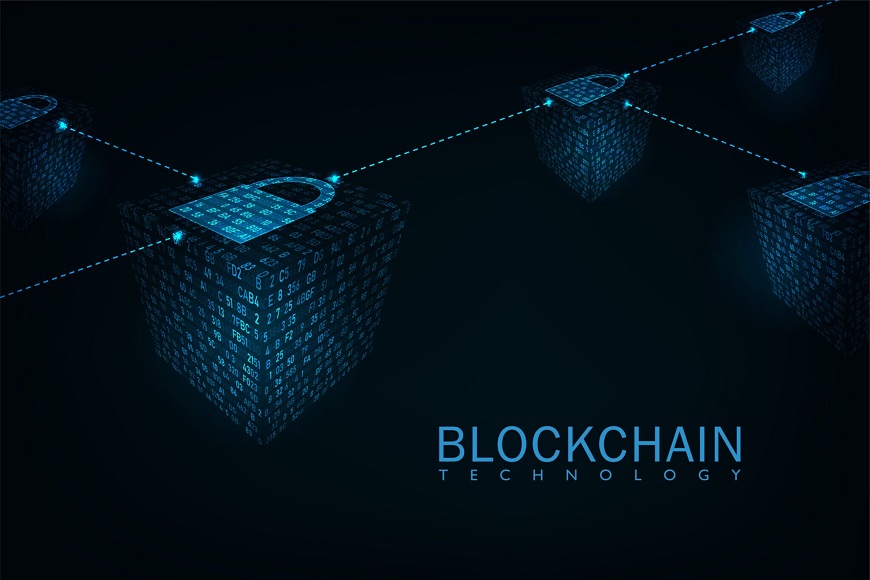Introduction to Polygon and Solana
Blockchain technology has revolutionized the digital landscape, enabling decentralized applications (DApps) and creating new possibilities for the digital economy. As the demand for scalable and secure blockchain solutions grows, platforms like Polygon and Solana have emerged as promising contenders.
In this article, we will delve into the key features and characteristics of Polygon and Solana, comparing their scalability, security, consensus mechanisms, ecosystem support, interoperability, smart contract functionality, token economics, community adoption, real-world use cases, and future roadmaps. By the end, you will have a comprehensive understanding of these platforms, enabling you to make an informed decision about which blockchain aligns best with your specific needs.
Scalability: How Polygon and Solana Address High Transaction Throughput
Scalability is a fundamental challenge for blockchain networks, as traditional blockchains like Bitcoin and Ethereum face limitations in terms of transaction throughput. Polygon addresses this issue by providing a layer 2 scaling solution that offers high-speed and low-cost transactions. By leveraging Ethereum’s security while avoiding congestion on the main net, Polygon achieves scalability through its Polygon PoS (Proof of Stake) chain and its numerous sidechains. These sidechains can be customized for different use cases, enhancing the overall throughput of the network.
Solana, on the other hand, is a high-performance blockchain designed for scalability and speed. It utilizes a unique consensus algorithm called Proof of History (PoH), which orders transactions and allows parallel processing, resulting in significantly higher transaction throughput. Solana’s network architecture also incorporates a multi-threaded approach, enabling simultaneous execution of transactions and smart contracts across multiple cores and GPUs. This innovative design ensures that Solana can handle thousands of transactions per second, making it one of the fastest blockchain platforms available.
Security Features: A Comparison of Polygon and Solana’s Security Measures
Security is of utmost importance in the blockchain space, as it ensures the integrity of transactions and protects user assets. Polygon employs a robust security model by leveraging Ethereum’s security through the Plasma framework. With Ethereum’s battle-tested consensus mechanism and smart contract functionality, Polygon inherits a high level of security for its sidechains. Additionally, Polygon employs a decentralized network of validators who secure the network and validate transactions, further enhancing the security of the platform.
Solana, too, prioritizes security by incorporating a range of measures. Its PoH algorithm ensures the chronological order of transactions, preventing any manipulation or tampering. Solana’s consensus mechanism, Proof of History, provides a verifiable historical record, making it extremely difficult to forge or alter past transactions. Furthermore, Solana’s network architecture includes a network of validators who reach a consensus on the state of the blockchain, ensuring the security and correctness of the network.
Consensus Mechanisms: Understanding the Consensus Protocols of Polygon and Solana
Consensus mechanisms are the backbone of blockchain networks, responsible for achieving agreement among network participants. Polygon utilizes a PoS consensus mechanism, where validators stake their tokens and take turns proposing and validating blocks. This ensures a decentralized network while reducing energy consumption compared to traditional proof-of-work (PoW) systems. Polygon’s PoS consensus mechanism allows for faster block times and efficient block validation, contributing to the overall scalability of the network.

Solana’s unique consensus algorithm, Proof of History, complements its PoS mechanism. Proof of History provides a trustless and verifiable source of time within the network, enabling validators to agree on the order of transactions. Solana’s PoS consensus mechanism, known as Tower BFT (Byzantine Fault Tolerance), builds on this foundation by utilizing a network of validators to reach a consensus on the state of the blockchain. The combination of Proof of History and Tower BFT ensures fast confirmation times and enhances the security of Solana’s network.
Ecosystem and Developer Support: Analyzing the Developer-Friendly Features of Polygon and Solana
For blockchain platforms to thrive, they must provide a supportive ecosystem and cater to the needs of developers. Polygon offers a developer-friendly environment by leveraging Ethereum’s extensive tooling and infrastructure. Developers can easily port their Ethereum-based DApps to Polygon, taking advantage of the high scalability and low transaction costs. Polygon also provides a wide range of developer tools and documentation, fostering innovation and making it easier for developers to build on the platform.
Solana, too, prioritizes developer support by offering an extensive set of tools, libraries, and documentation. The Solana Developer Experience (SOLDEX) provides a comprehensive suite of resources, including a software development kit (SDK), developer forums, and educational materials. Solana’s architecture and programming model is designed to be familiar to developers, enabling them to build and deploy DApps with ease. The platform also offers a decentralized autonomous organization (DAO) called the Solana Foundation, which provides grants and support to projects building on Solana.
Interoperability: Examining the Cross-Chain Capabilities of Polygon and Solana
Interoperability is a key feature for blockchain platforms, allowing them to communicate and share data across different blockchains. Polygon provides interoperability through its Ethereum compatibility. By bridging with Ethereum, Polygon enables the transfer of assets and data between the two networks. This interoperability expands the possibilities for developers and users, as they can leverage the strengths of both platforms.
Solana, too, recognizes the importance of interoperability and has developed partnerships and integrations with other blockchains and protocols. Solana’s Wormhole bridge facilitates the transfer of assets between Solana and Ethereum, allowing users to take advantage of the strengths of both platforms. Additionally, Solana’s architecture enables the deployment of parallel instances of other blockchain networks, further enhancing interoperability and fostering collaboration between different blockchain ecosystems.
Smart Contract Functionality: Comparing the Smart Contract Capabilities of Polygon and Solana
Smart contracts are self-executing contracts with predefined conditions and rules. They are the building blocks of decentralized applications and enable the automation of complex transactions. Polygon supports Ethereum Virtual Machine (EVM)-compatible smart contracts, allowing developers to seamlessly port their Ethereum-based contracts to Polygon. This compatibility makes it easy for developers to leverage their existing codebase and expand their reach to Polygon’s scalable network.
Solana, on the other hand, provides a unique smart contract platform called Solana Contracts. Solana Contracts are built using the Rust programming language, offering high-performance and efficient execution. Solana’s smart contracts leverage the Solana runtime, taking advantage of the platform’s low latency and high throughput. The Solana Contracts ecosystem provides developers with the tools and libraries necessary to build and deploy smart contracts on the Solana network.
Token Economics: Understanding the Token Models and Incentives of Polygon and Solana
Tokens play a crucial role in blockchain ecosystems, incentivizing participation and facilitating the exchange of value. Polygon has its native token called MATIC, which serves as the fuel for transactions and governance within the Polygon ecosystem. MATIC holders can participate in staking to secure the network and earn rewards. Polygon’s token model also includes a token-burning mechanism, where a portion of the transaction fees is used to buy and burn MATIC, reducing the token supply and potentially increasing its value over time.
Solana has its native token called SOL, which serves as the primary utility and governance token for the Solana ecosystem. SOL holders can participate in staking to secure the network and earn staking rewards. Solana’s token model also incorporates a mechanism called “SOL fees,” where a portion of the transaction fees is burned, reducing the token supply and potentially increasing the value of SOL over time. Solana’s tokenomics aim to create a sustainable and deflationary supply, providing incentives for token holders and validators.
Community and Adoption: Assessing the Popularity and User Base of Polygon and Solana
Community and adoption are essential indicators of a blockchain platform’s success and potential. Polygon has gained significant popularity due to its scalability and compatibility with Ethereum. Its vibrant community consists of developers, projects, and users who have embraced the platform’s capabilities. Polygon’s growing user base can be attributed to its support for popular DApps and its efforts to onboard new projects through grants and incentives. The platform’s active community and widespread adoption contribute to its overall strength and potential for future growth.

Solana has experienced remarkable growth and adoption since its launch. With its high scalability and transaction throughput, Solana has attracted a wide range of projects, including decentralized exchanges (DEXs), NFT platforms, and gaming applications. Solana’s ecosystem boasts a passionate and active community, evident through various hackathons, developer events, and community-led initiatives. The platform’s rapid adoption and vibrant community position Solana as a strong contender in the blockchain space.
Use Cases and DApps: Highlighting Real-World Applications and Projects Built on Polygon and Solana
Real-world use cases demonstrate the practical applications and versatility of blockchain platforms. Polygon has witnessed the emergence of numerous successful projects and DApps across various sectors. These include decentralized finance (DeFi) protocols, non-fungible token (NFT) marketplaces, gaming platforms, and infrastructure projects. Notable examples include Aave, SushiSwap, OpenSea, and Decentraland. The scalability and low transaction costs of Polygon make it an attractive choice for developers seeking to build efficient and user-friendly applications.
Solana has also seen remarkable adoption and has become a hub for innovative projects. Its high-speed and low-cost transactions make it suitable for high-performance applications. Solana’s use cases range from DeFi platforms like Serum and Raydium to NFT marketplaces such as Solanart. The platform has also gained attention in the gaming industry, with projects like Star Atlas and Mango Markets. Solana’s versatility and scalability enable developers to create complex and interactive applications across multiple sectors.
Future Roadmap: Exploring the Future Plans and Upcoming Developments for Polygon and Solana
Both Polygon and Solana have ambitious roadmaps and exciting developments planned for the future. Polygon aims to further enhance its scalability by introducing Polygon SDK, a modular framework that enables developers to build their own sidechains. Polygon is also exploring layer 1 solutions to provide even greater throughput and interoperability. Additionally, Polygon plans to expand its ecosystem through strategic partnerships and collaborations, fostering the growth of DApps and projects built on its platform.
Solana’s future roadmap focuses on enhancing its developer experience and expanding its ecosystem. The Solana Foundation plans to invest heavily in developer tools, education, and grants, encouraging more developers to build on the Solana network. Solana aims to foster innovation through hackathons, accelerator programs, and collaborations with established technology partners. The platform also aims to improve its interoperability by further expanding its bridge solutions to connect with other blockchains.
Conclusion: A Summary of the Pros and Cons of Polygon and Solana, and Which Blockchain Might Be the Right Fit for Your Needs
In summary, Polygon and Solana are both prominent blockchain platforms with unique features and strengths. Polygon excels in scalability, offering a layer 2 scaling solution that leverages Ethereum’s security and ecosystem. Its compatibility with Ethereum allows for seamless integration and access to a wide range of existing DApps and infrastructure. Polygon’s growing community and vibrant ecosystem make it an attractive choice for developers seeking scalability and cost-efficiency.
On the other hand, Solana stands out for its exceptional transaction throughput and high-performance architecture. Solana’s innovative consensus mechanisms and parallel processing capabilities make it one of the fastest blockchain platforms available. The platform’s active and expanding ecosystem, coupled with its focus on developer support, positions Solana as a powerful choice for high-performance applications and projects.
Ultimately, the choice between Polygon and Solana depends on your specific needs and priorities. If scalability, compatibility with Ethereum, and a vibrant community are your primary considerations, Polygon may be the right fit for you. On the other hand, if you prioritize high-speed transactions, superior performance, and a rapidly growing ecosystem, Solana may be the blockchain platform that best aligns with your requirements. Whichever platform you choose, both Polygon and Solana offer promising opportunities for innovation and growth in the blockchain space.

